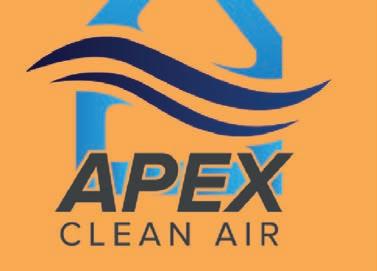










BY RYLEE DUNN

climbs a tree stump in a forest, a western bluebird perches on its head while monarch butter ies y around the octopus, which is also drinking a cup of co ee.
It’s a scene that’s unlikely to be found in nature, but is now displayed, in mural form, on the north side of Rheinlander Bakery in Olde Town Arvada.
For muralist Patrick Maxcy, who earned the mural commission by winning last year’s Olde Town Shindig Mural Contest, putting octopuses in unexpected places is
Maxcy is an accomplished muralist who has painted 18 murals throughout Colorado and beyond, with other murals completed in Nicaragua and Uganda, to name a couple. He was one of the rst supporters of public mural art in Arvada’s historic district, long before Olde Town became replete with sprawling installations.
“I actually started pitching murals to
vada for a few years, and lived very close to Olde Town, and I remember meeting (Olde Town BID Director) Joe (Hengstler) at a
“And even back then, I was trying to pitch ideas to him for murals in Arvada,” Maxcy continued. “And I don’t think there were any. e rst project we did was (painting) the electrical boxes to kind of get people used to the idea. I was part of getting that project going and working on that mural, and then it slowly grew from there into more murals.”
City council shutters COVID-era policy that kept water on for sanitary purposes
BY RYLEE DUNN RDUNN@COLORADOCOMMUNITYMEDIA.COM
Arvadans who don’t pay their water bills can expect to have their water service cut o due to an ordinance passed by the city council that returns the city’s water bill payment policy to its preCOVID terms.
At the July 1 business meeting, the Arvada City Council approved the ordinance by a 6-1 vote, with Councilmember Shawna Ambrose being the lone dissenter.
Since 2020, Arvada has been using a lien system, which, according to the city’s Director of Infrastructure Jacqueline Rhoades, has placed a burden on city sta .
“As of now, the shuto process remains inactive, and instead, delinquent accounts are managed only through our annual lien process,” Rhoades said. “A review of our current practices indicates that relying solely on the lien process is ine cient, consuming signi cant resources and failing to e ectively encourage timely customer payments.”
Before the pandemic, the city saw about 1,700 to 1,900 water shuto s annually, Rhoades said. While liens used to comprise a smaller percentage of delinquent water accounts, they’ve tripled since the policy change, going from 72 liens in 2019 to 572 in 2024. e City Clerk and Recorder’s O ce said that processing those 572 liens in 2024 cost over $7,000. Based on data from November and December 2024, there were 1,267 delinquent accounts, representing $625,937 in unpaid water and sewer charges. e transition to a lien system was to ensure that all residents had access to water for hygiene purposes — speci cally hand washing — to prevent the spread of COVID, Rhoades said.

Arvada press
A legal newspaper of general circulation in Je erson County, Colorado, the Arvada Press is published weekly on Thursday by Colorado Community Media, 3540 Evergreen Parkway, Evergreen, CO 80439.
POSTMASTER: Send address change to: Arvada Press, 750 W. Hampden Ave., Suite 225, Englewood, CO 80110
Call first: 3540 Evergreen Parkway, Evergreeen, CO, 80439
Mailing Address:
750 W. Hampden Ave., Suite 225 Englewood, CO 80110
Phone: 303-566-4100
Web: ArvadaPress.com
To subscribe call 303-566-4100 or Scan this QR Code

STEVE T STRICKBINE
President steve@timeslocalmedia.com
NADINE JOHNSON
Director of Operations nadine@timeslocalmedia.com
NICK OLIVERI Director of Sales nick@timeslocalmedia.com
COURTNEY OLDHAM Production and Design Director production@timelocalmedia.com
DYLAN LOTTS Editorial Supervisor dlotts@coloradocommunitymedia.com
RYLEE DUNN Community Editor rdunn@coloradocommunitymedia.com
ERIN ADAMS Marketing Consultant eadams@coloradocommunitymedia.com
LINDSAY NICOLETTI Operations/ Circulation Manager lnicoletti@coloradocommunitymedia.com
Columnists & Guest Commentaries
Columnist opinions are not necessarily those of the Press.
We welcome letters to the editor. Please include your full name, address and the best number to reach you by telephone.
Email letters to letters@coloradocommunitymedia.com Deadline Tues. for the following week’s paper.
BY SUZIE GLASSMAN SUZIE@COTLN.ORG
Je erson County Public Library workers say a proposed dress code policy under negotiation would bar them from wearing Pride pins, DEI-themed shirts or other visible signs of support for marginalized communities, despite the library’s public celebration of diversity. e proposed change comes as sta are negotiating their rst-ever union contract. In March 2024, JCPL employees voted to unionize, forming the Je erson County Library Workers Union under Colorado’s new collective bargaining law. Contract talks have been underway since the vote.
At issue is the library’s current dress code, which allows sta to wear business casual attire and include limited adornments on lanyards, such as pronoun buttons and two additional pieces.
e policy also states apparel should be “free of slogans/wording other than JCPL or County-sponsored items.”
Union members say they had hoped to clarify and expand this policy to explicitly allow supportive t-shirts and buttons tied to library events, such as Pride Month, Black History Month or Banned Books Week.
Instead, management has proposed further tightening restrictions, eliminating all visual messaging, including buttons and other visual elements.
Williams said management has cited safety concerns, arguing that visible political messaging could lead to verbal altercations. For instance, a patron might yell at a sta member for wearing a Pride button.
Williams said she’s unaware of any prior incidents involving apparel, and noted the library’s public-facing code of conduct already addresses verbal harassment.
“ ey’re saying it will make library workers
safer,” Williams said. “But what keeps us safe is enforcing the code of conduct, not telling us not to wear a button.”
Sta raise concerns over free expression Williams and union sta believe the issue goes beyond a few slogans.
“ is isn’t just about a dress code,” said librarian Katherine Williams, a member of the union’s bargaining team. “ is is the canary in the coal mine.”
JCPL leadership declined to answer speci c questions, citing the ongoing collective bargaining process.
Executive Director Donna Walker emphasized the library’s public-facing commitment to equity.
“JCPL remains unwavering in its commitment to diversity, equity and inclusion, and we will not restrict or diminish our support for these e orts,” Walker said.
JCPL also highlighted its continued support for LGBTQ+ communities with a robust lineup of Pride Month programming in June, including author talks, book displays, lm screenings and family-friendly events across multiple branches.
But union members say that’s not what’s playing out behind the scenes.
“How can the library present itself externally as radically welcoming, while internally telling sta they’re not allowed to express the same kind of support?” asked sta member Katy Conway during public comment at a June 18 board meeting. at meeting, according to Williams, drew more than 40 attendees, including over 20 patrons who spoke out against the proposal. No one, she said, spoke in favor.
“ is proposed policy is not neutral,” sta member Anna Sparlin told the board. “It’s going to be a nightmare to enforce, and it throws our most vulnerable sta and patrons under the bus.”
Williams also pointed to what she described as a double standard. While management seeks to ban symbolic support for marginalized groups, the library has declined to imple-


questions
ment a county statute that would prohibit the open carry of rearms in library facilities.
“If management views signs of support for marginalized communities as ‘o ensive’ or a safety concern while simultaneously refusing to implement a county statute that would prohibit open carry of rearms in libraries, we are forced to ask: whose safety really matters?” she said
While the dress code issue hasn’t derailed broader negotiations, sta said it re ects larger concerns about creeping restrictions on library programming and materials.
“Public libraries exist to serve everyone,” Williams said. “But that only works when sta are empowered to re ect the values of equity, safety and inclusion that our communities need and deserve.”
Colorado joins 19 other states to stop transfer of Medicaid data to ICE
Colorado is joining a multistate coalition in a lawsuit to block the mass transfer of individual personal data to the Department of Homeland Security and Immigration and Customs Enforcement.
Attorney General Phil Weiser and his counterparts in 19 states are suing the U.S. Department of Health and Human Services, according to a press release issued by his ofce.
e attorneys general said the mass transfer of the data violates the law and asked the court to block any new transfer or use of this data for immigration enforcement purposes.
and Medicaid Services, or CMS, the federal agency that administers the nation’s health program for low-income Americans, made a “lengthy and detailed”data requestto Colorado’s agency that administers Medicaid, according to Marc Williams, public information o cer with the Department of Health Care Policy and Financing.
e request was made to seven other states, he said, without providing details on which ones.
e Associated Press reported CMS has shared personal information of Medicaid from people living in California, Illinois, Washington state and Washington D.C., with the Department of Homeland Security, the agency in charge of immigration enforcement and the administration’s deportation push.
Medicaid bene ts are reserved for individuals who are lawfully entitled to receive them.”
“Colorado’s immigrant communities should never have to fear that accessing lifesaving care could lead to detention or deportation,” said Nicole Cervera Loy, Policy and Campaign Manager at the Colorado Immigrant Rights Coalition, in an email to CPR. “ is unprecedented request for sensitive health data is not about program integrity— it’s about surveillance and punishment. We call on state leaders to reject this directive and uphold Colorado’s values of dignity, safety, and care for all.”

Colorado Community Media asks readers to make us aware of mistakes we may have made.
Email sgilbert@coloradocommunitymedia.com if you notice a possible error you would like us to take a look at.

e suit was led in the U.S. District Court for the Northern District of California.
“ e personal health care data collected about Medicaid bene ciaries is con dential, to be shared only in narrow circumstances that bene t public health and the integrity of the Medicaid program,” said Weiser, a Democrat. “ ere’s no reason to share this sensitive data with immigration or law enforcement agencies. We’re suing to protect Colorado’s Medicaid program and the health and welfare of the people it serves.”
In early June, the Centers for Medicare
In response, advocacy groups in Colorado raised a variety of privacy, safety and health concerns.
An HHS spokesperson told CPR last month the request was within the agency’s authority.
“HHS and CMS take the integrity of the Medicaid program and the protection of American taxpayer dollars extremely seriously,” said U.S. Health and Human Services spokesperson Andrew Nixon, in an email. “With respect to the recent data sharing between CMS and DHS, HHS acted entirely within its legal authority – and in full compliance with all applicable laws – to ensure that
e coalition highlighted in the suit that “the Trump administration’s illegal actions are creating fear and confusion that will lead noncitizens and their family members to disenroll, or refuse to enroll, in emergency Medicaid for which they are otherwise eligible, leaving states and their safety net hospitals to foot the bill for federally mandated emergency healthcare services,” according a press release from the Attorney General’s O ce. Colorado joined the following states in the legal challenge: Arizona, California, Connecticut, Delaware, Hawaii, Illinois, Maine, Maryland, Massachusetts, Michigan, Minnesota, Nevada, New Jersey, New Mexico, New York, Oregon, Rhode Island, Vermont and Washington.
is story is from CPR News, a nonpro t public broadcaster serving Colorado. For more, and to support CPR News, visit cpr.org.
The bill as passed by the Senate included NAR’s five key priorities:
A permanent extension of lower individual tax rates
An enhanced and permanent qualified business income deduction (Section 199A)
A temporary (five-year) quadrupling of the state and local tax (SALT) deduction cap, beginning for 2025
Protection for business SALT deductions and 1031 like-kind exchanges
A permanent extension of the mortgage interest deduction
Low-Income Housing Tax Credit (LIHTC): Key provisions from the LIHTC Improvement Act are included on a permanent basis to support affordable housing development.
No Changes to Carried Interest Rules


“These provisions form the backbone of the real estate economy—from supporting first-time and first-generation buyers to strengthening investment in housing supply and protecting existing homeowners,” according to a NAR spokesperson. “Real estate makes up nearly one-fifth of the entire U.S. economy, and we made sure policymakers understood that homeownership is the essential component to building wealth and a strong, prosperous middle class.”
Several other provisions in the bill championed by NAR add to its positive impact on the real estate sector:
Child Tax Credit Increased to $2,200: Permanently raises the credit, with inflation indexing. This provision could ease housing affordability for families.
Permanent Estate and Gift Tax Threshold Set at $15 Million (Inflation-Adjusted): Prevents a sharp drop in exemption levels and supports generational wealth transfer.
No Increase to the Top Individual Tax Rate: The proposed 39.6% rate was removed from the bill.
Restoration of Key Business Provisions:
Full expensing of research and development
Bonus depreciation
Fixes to the interest expense deduction limit
Immediate Expensing for Certain Industrial Structures: Applies to facilities used in manufacturing, refining, agriculture and related industries.
Clickable links for each column can be found at www.JimSmithColumns.com
May 29, 2025 — Divorcing Couples With a Home Need a Realtor With Specialized Training
May 22, 2025 — Home Sharing Helps Single Seniors Deal With Finance and Loneliness, Allowing Them to Age in Place
April 24, 2025 — Lennar to Build 1,500 Geothermal Homes; My Review of the Mustang Mach
E
April 17, 2025 — Redfin Report Highlights the Increasing Cost of Buying versus Renting a Home
April 10, 2025 — The Typical Wood-Frame, SiteBuilt Home So Common Since the ’90s May Soon Be a Thing of the Past
Mar. 27, 2025 — Here’s How Money Is Handled at a Real Estate Closing
Mar. 20, 2025 — Thinking of Using a Reverse Mortgage to Purchase a Home? Here’s Some Information
Mar. 13, 2025 — Will Colorado Be Able to Sustain Its ‘Green Agenda’ Under Pressure From Washington?
Mar. 6, 2025 — 62% of Americans Think a 20% Down Payment Is Required, But It’s the #1 Myth
Feb. 27, 2025 — As Society Deals With Homelessness and Affordability, Expect a Greater Focus on Manufactured Homes
Feb. 20, 2025 — We Have a Tool to Help You Find the ‘Perfect’ Home That’s Not on the MLS
Dec. 26, 2024 — As Pro-Tenant Laws Expand, Some Small Landlords Are Considering Cashing Out
Dec. 19, 2024 — What Are the Costs of Buying or Selling a Home in Colorado?
Nov. 7, 2024 — We Need to Take Seriously the Pollutants Emitted When Cooking With Gas
Oct. 31, 2024 — Cooperative Living Presents an Attractive Alternative for Downsizing Seniors
Sept. 26, 2024 — Some Thoughts on Keeping Your Death From Becoming an Undue Burden on Your Heirs
Sept. 5, 2024 — What Knowledge and Skills Should You Expect Your Real Estate Agent to Have?
Aug. 8, 2024 — Seniors Over 70 Might Consider Downsizing Into a Rental, Not a Smaller Home
July 25, 2024 — Many Homeowners Don’t Understand Title Issues, Which Could Lead to Big Problems Later On
June 6, 2024 — Here Are Some Simple Steps to Take to Avoid Unpleasant Surprises After Closing
Mar. 21, 2024 — What’s Behind the Buzz About ‘Indoor Air Quality’ and ‘Sick Building Syndrome’?
Feb. 22, 2024 — Most Sellers Don’t Know How to Interview a Listing Agent. Here’s Some Guidance.
Dec. 21, 2023 — D.R. Horton Inks Deal to Build Homes With OSB Made From Grass Instead of Wood
Nov. 23, 2023 — Scamming Has Become An Industry, and We’re All Prospective Victims
Sept. 28, 2023 — Insurance Companies Are Pulling Out of California. Is That in Our Future?
Aug. 10, 2023 — What Are Some Common Mistakes That Homeowners Make When Selling?
June 15, 2023 — Don’t Let Capital Gains Tax Deter You From Cashing Out on an Investment Property
May 11, 2023 — Do Agents Inflate the Cost of Buying or Selling Your Home with ‘Junk Fees’?
Apr. 20, 2023 — What Are Some Affordable Ways to Make Your Home More Attractive to Buyers?
Mar. 16, 2023 — Here Are Some Ways to Make Your Home More Accommodating to Seniors
Feb. 9, 2023 — Understanding Indoor Air Quality and How It’s Managed in Super-Insulated Homes
Oct. 27, 2022 — Sales Taxes May Be Lower, But Property Taxes Are Higher in Unincorporated Areas

Strengthened Opportunity Zones: Renewed with revised incentives to promote targeted investment, including in rural areas. NAR polling found that 80% of voters support such tax incentives to drive economic development in underserved communities.
The deadline for this ad was last Friday, before the House of Representatives took the Senate bill up for approval. NAR is hopeful the provisions detailed above will remain in the final version of the bill.
This article was adapted from an email newsletter article I received from NAR. I made only minor edits to it.
The following charts were provided by Samanth Glenn of Land Title, along with this summary of the market for June 2025:
The Greater Metro Denver housing market saw active listings continue to grow in June — a 33% increase when compared to last year at this time. New listings declined when compared to last month (-19%) but were up 3% when compared to last year. Pending sales (demand) increased 6% when compared to last year, but did see a slight decline when viewed month-over-month.
The average days on market remained high at 35 days, an increase of 30% year over year. More highlights are below.
In June, active listings were down 0.2% month-over-month but remained elevated when compared to June 2024, which saw 9,866 active listings.
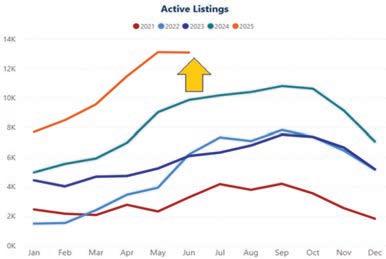
June saw 5,582 new listings enter the market. This data point decreased 18.7% when compared to last month, which saw 6,869 new listings. Last year at this time we saw 5,446 new listings.
Pending sales decreased by 3% when compared to last month. Last year at this time we saw 3,777 pending sales.

Look at how the months of inventory (unsold lis ngs) compare to prior years:



The ra o of closed price to lis ng price (99.1%) was the lowest of the past ve years:

June saw the average days on market at 35. Last month saw 33 days and last year at this time saw 27 days, on average.

The number of showings per listing for June was at 4.6. This was a decrease of 6.1% compared to last month. Last year at this time we saw 5.2 showings per listing, on average:

More readable versions of these charts are at http:RealEstateToday.substack.com


is decision was made to ensure that all residents, regardless of account delinquency, had access to fresh water for hygiene purposes, speci cally hand washing to prevent the spread of the virus.
Rhoades said that the Infrastructure Department will report back to the council in 90 days to let them know how the new system works.
“What are the actual impacts?” Mayor Lauren Simpson asked when requesting the report back. “What are we seeing? Are we seeing a massive uptick of folks who are taking advantage of the assistance?”
Ambrose said that while she agreed the lien system is not working, she wished there was another way to handle delinquent accounts.
“I really appreciate what the city is presenting, and that the lien process is denitely not working,” Ambrose said. But I wish there were other solutions that had been presented besides shutting o water to see if there was a way to do it…I just really don’t like shutting o people’s water.”

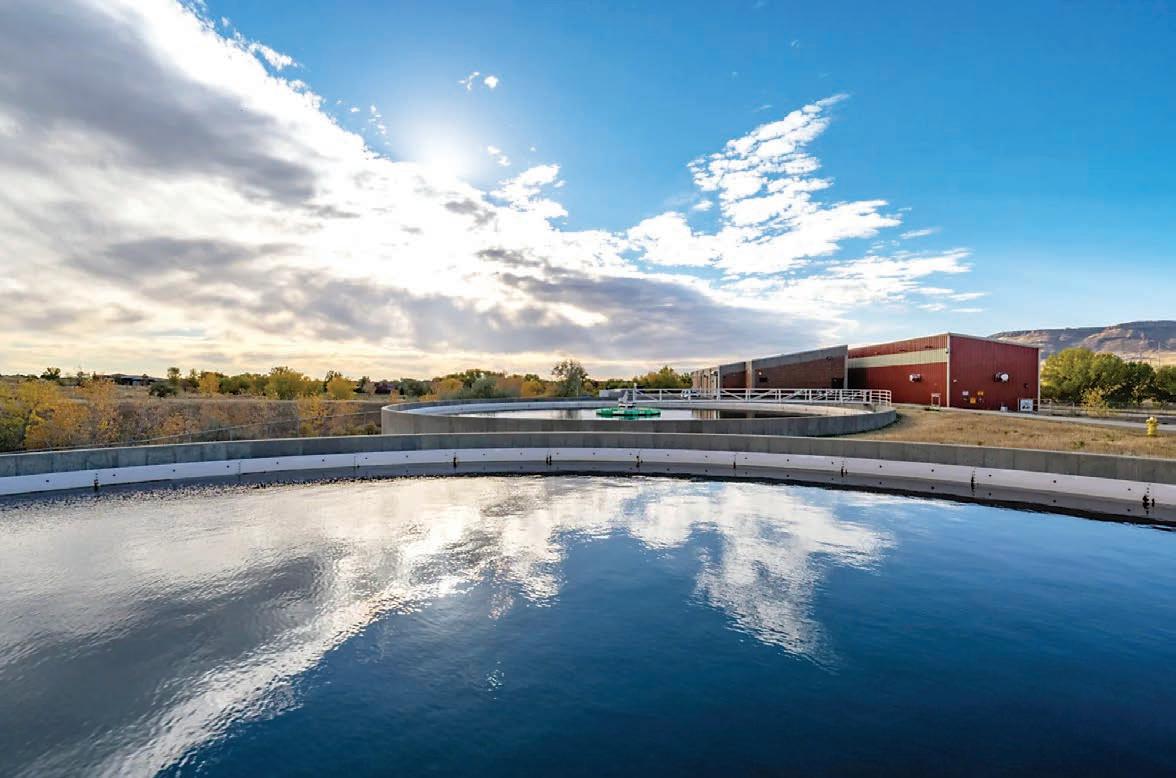
bill payment process sees a bill mailed out 30 days before it is due. On day 36 after that mail date, residents will start to get a delinquent notice via email or call and email notice that there are another ve days before the shuto begins.

Moten has directed Arvada Center productions including ‘Cinderella,’ ‘Clybourne Park’ and ‘Once Upon a Mattress’
BY RYLEE DUNN RDUNN@COLORADOCOMMUNITYMEDIA.COM
A frequent Arvada Center collaborator and acclaimed director, writer and vocalist is going to be working with the regional theatre company on a more consistent basis, as Kenny Moten has joined the Arvada Center team as its associate artistic director.
e position will see Moten, who has directed Arvada Center productions including “Cinderella,” “Once Upon a Mattress,” and “Clybourne Park,” working
alongside Artistic Director Lynne Collins with casting, producing and planning for the 2026-2027 theatre season and beyond.
Moten will direct “Frozen” and “Come from Away” during the upcoming 20252026 season.
“We feel incredibly lucky that Kenny will be sharing his energy and talents with us,” Collins said. “Along with being a gifted director and theatre-maker, Kenny’s skills and background will provide a fresh perspective for our work onstage and enhance our connections and engagement with our audience and community.”
Moten said he wanted to take a fulltime role at the Arvada Center because of the “strength of the collaboration” present at the facility.
“‘Cinderella’ was imaginative and full of fresh perspective,” Moten said. “‘Clybourne Park’ featured a unique intermis-
sion transition that blended scenic and sound design in a compelling way. Even ‘Once Upon a Mattress’ brought thoughtful new ideas to a classic. ose experiences made me realize this is the kind of environment I want to be part of every day.
“What really sets the Arvada Center apart is the creative exchange that happens during the production process,” Moten continued. “It is a place where artists feel free to bring ideas forward and take risks, and that freedom leads to stronger and more thoughtful work. While my focus is in theater, you can feel that same energy throughout the organization. at kind of environment is rare, and it elevates the work in every corner of the building.”
Tickets for the upcoming Arvada Center theatre season, which is set to open in September, are on sale now at arvadacenter.org.









BY JOHN RENFROW JOHN@COTLN.ORG
Summertime is in full bloom in Colorado, meaning perfect temperatures and picturesque backdrops for some hiking, camping and stargazing along the Front Range and beyond.
But in such a saturated state for adoring nature, plus those weekend crowds on I-70, how do you know where to start? Just like trying to pin down a hike on AllTrails, it can feel like spotting a needle in a haystack. You don’t want somewhere too crowded, too far away or all booked up with reservations. Plus, where you pitch a tent for the night may determine the extent of supplies you’ll need.
e Colorado Trust for Local News asked experienced locals where to start when looking for ideal camping nights in the Centennial State. Take notes from the testimonials below.
Important note: Always check campground rules and regulations before hitting the road and settling down for the night. Camping in the wrong areas is illegal and could result in nes or criminal charges.
Dispersed camping
“ ere are a couple of places south of Buena Vista. ere’s a road out there that I like going to. It’s a little bit more traveled, but I found camping there last weekend ... it’s really close to town near Browns Creek Trailhead. And this is dispersed camping (I camp with a camper. I’m not a tent camper, I’m a camper camper). It gets real close to town, and it’s quiet back in here, and there’s a trailhead right there where I like to camp.”
-Joe Lopez, Arvada

Awesome spaces in Deckers
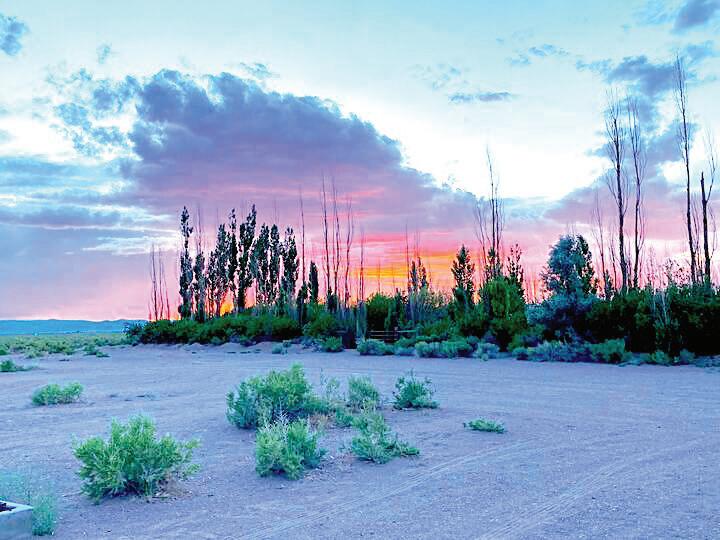

“Down just o US 285, just south of it, that whole region is called the South Platte. In the northern portion of the South Platte, the Deckers area as a whole, there’s a lot of open space land and BLM (Bureau of Land Management) land. In that, you can nd a lot of awesome spaces there. Potentially, some of them are free to just go camp. You just pull your car right to the spot. ere’s no one around, usually, and you just pitch your tent or park your RV and you’re camping.”
-Angus Applegarth, Evergreen Fire Protection District
Options for campers or for backpackers
“ ere is one trail that leads you to Horse Shoe Campground in Golden Gate State Park, which is a backpack-in-and-out situation, really nice and not a crazy hike, but very beautiful. en Wolford Reservoir is
great for next-to-water camping and large groups. For a camper-accessible option, the River Campsite near Estes Park would be a good option.”
-Lori Abbey, Arvada
Riverside camping
“Poudre Canyon is probably my No. 1. It’s easily accessible and the drive out is beautiful. Along the canyon is the Poudre River that has accessible beaches for chilling, shing and tubing. ere’s also guided white water rafting before my favorite spot, a restaurant/venue called Mishawaka Amphitheater, which is always a good stop for a beer and lunch by the water. e great part about the canyon is that there’s camping by the water and up on the mountain. Some spots are paid, but others are BLM. I also really enjoy the Black Canyon of Gunnison National Park. ere’s a load of free camping nearby and it’s a jaw-drop-
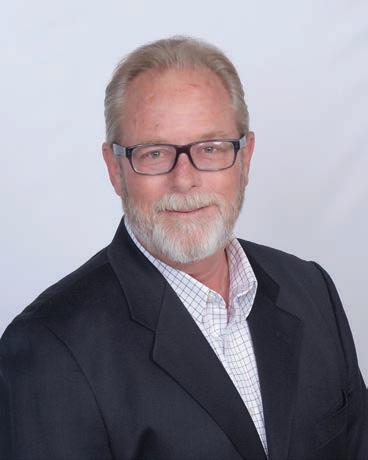
ping experience, from the drop o to the views. I remember getting in late for my rst visit and setting up camp, excited for the canyon. Waking up, I expected nothing, but walked out and felt like I was shot back to prehistoric times. Absolute beauty.”
-Jimmy Garcia, Northglenn
Secluded and private
“I love Guanella Pass because it’s just easily accessible, provides beautiful water and valley views and feels secluded and private.”
-Shelby Andress, Denver
Falls and dunes
“We really enjoy camping at the Great Sand Dunes, for obvious reasons. Zapata Falls is only about seven miles south of the sand dunes. It’s a really wonderful spot to go visit, and right now it’s actually glacial, so you need crampons to get up in there, but it’s beautiful. We camp a lot at Carter Lake just because it’s so convenient. It’s relatively inexpensive, it’s a good place to go sh and go exploring.
We have a 30-foot camper, travel trailer, so we have to rent a space like six months in advance. But there are tent sides all over the place. e cool thing about that, too, is you can go from dome tent campsites to the walk-in, double-room ones. It’s all really at. On the south campground, there’s a boathouse so you can rent whatever you need. If you go to the marina, you can actually rent a boat and kick around. We like to take our paddle boards into a couple coves ... gosh, just lay on your back, stare at the sky and fall asleep for a while, let the water just take you where you go.”
-Keith Hancock, ornton


There is something uniquely powerful about walking down a street lined with neighbors cheering for you, even if they do not know your name. at is the feeling you get when you are in a parade.
It is not about ego. It is about being part of the heartbeat of your hometown. It is about the waves from a stranger, the giggle from a child, the warmth in the air that says, “You belong here.”
So, why do people participate? Why do businesses, scout troops, marching bands, and civic groups put in the time, e ort, and energy to be part of something that moves at 2 mph?
The pull to participate
Some participate for exposure. A local business may want to build brand awareness. A new school might want to enroll students. A club may want to boost membership and show what it stands for.




Others join for tradition. It is what their group has done for years — a hometown ritual passed from one generation to the next. ere’s pride in saying, “We’re in the parade. We always have been.” And then some do it for something deeper: connection.
ey see the parade as a chance to bring joy, to give back, and to represent something of which they are proud. ey do not just want to be seen — they want to make someone feel something.
To light a spark.
Why some entries succeed
Not every entry grabs your attention. e ones that do share a common trait — they create a moment. ey do not just pass by. ey reach out, they are surprised and they connect. And
his week, I learned about the Finnish word “sisu.” ere is no good English translation of the word, so I spent some time seeing what I could nd out about it.
I discovered that it is a word that has been around for more than 500 years, and that Finnish people see it as integral to their designation by the United Nations as the happiest people in the world.
Not having any background in the Finnish language, I had to rely on di erent sources to nd the meaning of the word. As I dug, I found that sisu means courage, stamina, and perseverance combined with exibility and cleverness to create an ingenuity that allows individuals to overcome obstacles.
As the meaning of sisu became clear, I was struck by how important this idea is for overcoming struggles.
To truly face di culty in life takes great courage. I saw this with my friend Shane as he navigated a four-year battle with cancer. I know from my own experience with MS, the courage it takes to get up each morning, to do the things that I must do to be able to move around smoothly.
Along with courage, it takes
sometimes, they plant a seed. Let me tell you a story.
The Scout Story
A couple walked into our parade o ce with a printed application in hand and asked to deliver it in person. When I asked why they did not just email it like everyone else, they smiled and said, “Because a child came up to our Scout entry last year and said, ‘I don’t know who you are or what you do, but I want to be a part of it.’” at is the impact a great entry can have. at moment, that spark of curiosity — it stays with a child long after the candy is gone and the confetti settles. It becomes the start of a story, maybe even a calling. ey did not win a trophy. ey did not have the biggest oat. But they won something else: in uence, inspiration and belonging.
The secret to a successful entry
It is not about money. It is not about size.
It is about meaning. When an entry shows e ort, creativity, and heart, people remember it. And when it connects with children, it connects with the entire crowd. It whispers to every person on the curb: “You matter. You’re part of this, too.” So, if you are thinking about entering a parade this year, ask yourself, “What can we do that will make someone watching say, ‘I want to be a part of that?’” at is when your entry becomes more than a spot in a lineup — it becomes a moment. A memory. A message that lingers long after the marching stops. Need help producing an idea? I have seen thousands of entries over the years and would be glad to help you brainstorm.
Let us make something that matters. is guest column was written by Ed C. Tomlinson, who is the Arvada Harvest Festival parade chair. He can be reached at edctomlinson@gmail.com.



stamina to navigate an issue. Courage and stamina go hand in hand; you can’t have one without the other when you are traversing difcult times. Our lives do not come with message boards that tell us, “In 127 days, the issues you are navigating will be resolved and you will have 300 days of smooth sailing.” We must move forward without a clear understanding of what the future holds. To navigate those issues daily, without the bene t of a clear endpoint, takes courage and the stamina to put one foot in front of the other.
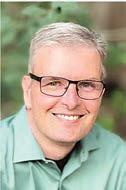
But sisu goes further. It declares that courage, stamina, and perseverance are not enough, and explains that to overcome our struggles, we must think di erently, be exible in our mindset, and be open to di erent ways of doing things. When we combine grit with exibility, we nd true genius — we nd new ways.
I guess you could write it as a
Colorado Community Media welcomes letters to the editor. Please note the following rules:
• Email your letter to letters@coloradocommunitymedia. com. Do not send via postal mail. Put the words “letter to the editor” in the email subject line.
• Submit your letter by 5 p.m. on Wednesday in order to have it considered for publication in the following week’s newspaper.
• Letters must be no longer than 400 words.
• Letters should be exclusively submitted to Colorado Com-
cookbook recipe: add one cup each of courage, stamina, and perseverance to a struggle. Mix in healthy amounts of exibility and openness to new ways of doing things. Bake in the oven of experience, and what will emerge is an ingenuity that will allow an individual to overcome their obstacle.
I think it is exceptionally easy to get stuck in the idea that working harder will lead to victory over a struggle. Sisu opens us up to the idea that it takes more than our internal drive to get over our most di cult hurdles. It takes a di erent mindset.
If you have not thought outside the box in your struggle, maybe it is time.
You have got this!
Jim Roome lives in Arvada with his wife, Beth. He spent 34 years in public education. Lessons learned from the one two punch of being diagnosed with MS shortly before his best friend was diagnosed with terminal cancer led him into a new pursuit as a freelance writer and speaker. He uses his life experiences and love of stories to inspire, educate and encourage local, national and international audiences. Contact him at jim.roome@gmail.com.
munity Media and should not submitted to other outlets or previously posted on websites or social media. Submitted letters become the property of CCM and should not be republished elsewhere.
• Letters advocating for a political candidate should focus on that candidate’s qualifications for o ce. We cannot publish letters that contain unverified negative information about a candidate’s opponent. Letters advocating for or against a political candidate or ballot issue will not be published within 12 days of an election.
Intimacy is a deeply personal and evolving aspect of a woman’s life, shaped by physical, emotional and hormonal changes across different life stages. From early adulthood to post-menopause, the way women experience intimacy can shift in many ways. ese changes are natural and should be understood with compassion and openness, both personally and in relationships. In early adulthood, intimacy is often in uenced by exploration, self-discovery and the development of emotional bonds. is period is usually marked by high energy and libido, and fewer barriers to sexual activity. As women move into their 30s and 40s, intimacy can become more emotionally rooted. Relationships may deepen with time and communication often becomes a cornerstone of satisfaction and connection.
Menopause, a signi cant milestone in a woman’s life, introduces a new phase of change. During this time, estrogen levels drop, which can lead to physical symptoms that impact sexual function. Many women experience a decrease in libido, vaginal dryness and discomfort during intercourse. Common symptoms include hot ashes, mood changes, anxiety and even urinary problems — all of which can in uence how a woman feels about intimacy. Despite these changes, intimacy does not have to end. Instead, it can be re ned. Women are encouraged to explore





new forms of connection, whether through emotional closeness, communication, sensual massages or even changes in sexual activity. Maintaining a healthy lifestyle with exercise and a balanced diet can also support well-being and sexual health. Hormone therapy, relaxation techniques and open conversations with partners or healthcare providers can help women adapt to these transitions.
Ultimately, intimacy is not de ned by our youth. It is a lifelong journey that can ourish at any age when nurtured with care, openness and understanding. Restoring your sense of self is key to reigniting intimacy post-menopause. Your con dence begins with taking care of your body and mind. Whether it’s through regular exercise, a balanced diet or self-care rituals, taking time for yourself can improve your mood and overall wellbeing, making you feel more comfortable in whatever stage of life you’re in.
For more information, visit urogyns.com.
is guest column was written by Dr. Terry Dunn, the owner of Foothills Urogynecology, a Denver-based practice specializing in women’s health. To learn more, visit urogyns.com.
The creative process is everchanging and often requires taking a look back to locate the way forward. e Arvada Center’s three summer exhibitions celebrate this fact by using the past as a guide to nding a way to and through modern times.
“I hope people come away from the galleries with a new understanding of what they can perceive,” said Olive Witwer-Jarvis, exhibitions manager and associate curator at the Center. “ e personal stories and struggles on display provide a new look at what’s important.”




so much happening in people’s day-to-day life?”


Melissa Furness — Embedded: A Mid-Career Survey, Haley Hasler — Origin Stories and Past is Present is Past is Present are all on display at the Center, 6901 Wadsworth Blvd., through Aug. 24.
Set up in the Main Gallery, Embeddedi s an engrossing look at the career of an artist who is constantly nding new ways to explore themselves and the world around them. Broken up into subsections like In Ruins and Gathering Moss, Furness’ shows that she’s a conceptual artist of the highest order. Guests will see work that was created in places as disparate as Ireland and China, each with unique subjects and mediums worked into beautiful paintings.
History and its impact on our current times is a subject Furness — a professor at the University of Colorado Denver — returns to in fascinating ways, from making surreal recreations of wellknown works to displaying discarded bricks from China.
“My work explores human nature and struggle as it manifests itself in relation to contemporary society and the remains of the past,” Furness said in a provided statement. “I am interested in what one culture upholds as signi cant — objects and ideals that we revere versus those that we discard or discount as unimportant. What does what we throw away say about us as a people versus what we place on a pedestal or seek to preserve?”
e Upper Gallery is home to Origin Stories, where Fort Collins artist Haley Hasler paints portraits that take her friends and family and put them in elaborately staged settings. e end results are transporting, at once familiar and slightly foreign.
“ is show includes work from the past as well as my newest body of work,” Hasler said in a provided statement. “ e beloved, everyday people around me are transformed in my paintings into gods and goddesses of the everyday realm.”
In Past is Present is Past is Present, located in the eatre Gallery, visitors can see how Colorado artists use their ancestry, religious and cultural iconography, and mythology to shed a light on contemporary concerns, like our tumultuous political climate and missing Native women and children. e works are fascinating examinations of the artists’ relationship with the past and provide a window into the things that matter most.
“ ese exhibitions question what’s important and why,” Witwer-Jarvis said. “What makes something like the Mona Lisa so important, when there is

Clarke Reader

For more information, visit https:// arvadacenter.org/galleries/current-exhibi-
Go for a Moonlit Ride in Castle Rock
Castle Rock’s Pedal the Moon bike ride goes from 6:30 to 10 p.m. on Saturday, July 12 and departs fromCastle View High School, 5254 N. Meadows Drive, at 7 p.m. As dusk starts, riders will follow the East Plum Creek Trail for about 6 miles to Festival Park.
According to provided information, the terrain is suitable for all riders and participants are encouraged to decorate their bikes with lights and other items. ere will be a decorating station for those who want some glow-inthe-dark decorations. At Festival Park, riders can relax and enjoy some music while participating in some giveaways. Full details and registration information is available at https://www.crgov. com/3184/Pedal-the-Moon.
Feel the Artistic Power of ‘Mutual Terrain’ RedLine Contemporary Art Center is celebrating Denver Month of Photography withMutual Terrain, curated by Adán De La Garza and Jenna Maurice. e show is on display at the Center, 2350 Arapahoe St. in Denver, from Friday, July 11 through Sunday, Aug. 3.
According to a provided statement from the curators, “Mutual Terrain’brings together six artists whose works reveal the land as a living presence — one that remembers, resists, and responds. is exhibition invites viewers to reconsider their relationship to the natural world, not as separate from it, but as deeply entangled within it.”
e show encourages and rewards patience, so be ready to take your time. Find more information at https://www. redlineart.org/mutual-terrain-denvermonth-of-video-mov.
Clarke’s Concert of the Week — Car Seat Headrest at Mission Ballroom
Virginia’s Car Seat Headrest are one of the most ambitious bands in the indie rock world. Over the course of their career, they’ve experimented with all kinds of stylistic approaches, from kind-of rock operas to just straight up ripping rock albums. You never quite know what you’re going to get, but the lyrics are always extremely literate and the music is top-notch.
In support this their latest release, e Scholars, the band is coming to the Mission Ballroom, 4242 Wynkoop St. at 8 p.m. on Saturday, July 12. ey’ll be joined by openers Slow Fiction for what’s sure to be an evening of great, adventurous live music. Get tickets at www.axs.com.
Clarke Reader’s column on culture appears on a weekly basis. He can be reached at Clarke.Reader@hotmail. com.



























Hengstler said he was thrilled to have Maxcy’s mural work nd a home in Olde Town, especially on a historic shop like Rheinlander’s, which turned 61 years old this year.
“It’s been great working with Patrick on this latest mural,” Hengstler said. “Patrick did one of our rst public art installations




when we painted the electric boxes in Olde Town ve years ago, and I’ve personally always loved his work.
“I think it is especially meaningful to have this latest mural installed on Rheinlander Bakery,” Hengstler continued.
“Having been in Olde Town for three generations, the community has a lot of memories of coming here as children and now bringing their kids or grandkids. It’s our hope that this piece can now be part of that memory-making process.”
Maxcy said that as a former Arvada resident, he hopes his mural will conjure a sense of wonder for the visitors of Olde Town, especially families with young children.
“I love that Arvada has been so open to creativity and letting artists do a little more of their concepts and ideas,” Maxcy said. “My stu was a lot more imaginative and whimsical, and I wanted something a lot more playful, because I lived in Arvada, and there are a lot of families here, so I wanted something fun that kids and
lots of families could enjoy as they walk through Olde Town.”
To celebrate the occasion, Rheinlander’s has released a limited edition batch of cookies commemorating Maxcy’s work. e cookies — which will be available until July 12 — depict paint brushes, a paint palette and spray paint cans (Maxcy’s preferred medium), respectively.
More of Maxcy’s work can be found at his website, patrickmaxcy.com, or on his Instagram, @patrickmaxcy.

Colorado updates rules for eligibility before the 2025-26 year begins
BY SUZIE GLASSMAN SUZIE@COTLN.ORG
Starting July 1, families in Je erson, Adams and Weld counties can apply for free and reduced-price school meals for the upcoming 2025–26 school year.
While many schools in the area now offer free meals through Colorado’s Healthy School Meals for All program, the state still requires all families to complete the household income form. And it’s not just about meals. e household income form helps determine how much state and federal funding a school district receives for programs that support low-income students, including Title I services, fee waivers and grant eligibility.
State education o cials encourage all families to complete the application, regardless of whether their child attends a school that o ers universal free meals.
“When families ll out this application, they help unlock essential funding that supports students and schools across Colorado,” said Education Commissioner Susana Córdova. “Strong participation from families makes a real di erence.”
Families should apply if they have experienced a recent drop in income, receive SNAP, TANF or Medicaid, have children in foster care or Head Start or face housing instability.
Submitting the form can have a signicant impact, even in schools that provide meals to all students.
How to apply
Families can nd applications online — at www.cde.state.co.us./nutrition/determine-program-eligibility — or through their local school. Families only need to complete one application per household. e state says the form is con dential
and doesn’t ask about immigration or citizenship status. It typically requires household income information, the last four digits of a Social Security number (or a note if none is available) and a signature.
Household size and income determine eligibility. For example, a family of four earning $41,795 or less quali es for free meals, while those earning up to $59,478 qualify for reduced-price meals.
e Colorado Department of Education, as well as district nutrition services departments, provide a comprehensive eligibility chart.
Beyond meals, qualifying families may also receive discounts on internet, testing fees and other student services. Foster children automatically qualify for free meals and students experiencing homelessness or enrolled in Head Start may also qualify.
Families can submit applications at any time during the school year, especially if a household’s situation changes, such as a job loss or a change in family size. ose who receive public assistance can include
a case number to expedite the automatic eligibility process.
State o cials note that families who receive a letter from their district stating that a child quali es may not need to apply unless the notice omits the child’s name. Eligibility lasts through the school year and extends 30 days into the next.
O cials warn that some families may end up paying full price for meals if their school does not participate in the universal free meals program and if eligibility expires.
e Healthy School Meals for All program currently has funding through December 2025. State o cials say voters may be asked to approve additional funding through a ballot measure later this year to continue the program beyond that date.
More information is available through district nutrition services pages or on the Colorado Department of Education’s website, at www.cde.state.co.us./nutrition/determine-program-eligibility online.


Arok Garang said cuts to USAID immediately hurt supplies to the refugees
BY MONTE WHALEY MONTE@COTLN.ORG
Cuts to a key international aid program by the Trump administration hit the Seeds of South Sudan education effort quickly and hard, said founder Arok uch Garang.
e cuts were immediately felt in the Kakuma Refugee Camp in Kenya, where orphans rescued by Seeds of South Sudan subsist and struggle for a better life, said Garang, one of the original Lost Boys of Sudan.
e USAID organization provided basic needs such as food and medical supplies for the 250,000 who crowded into Kakuma, said Garang, a former Westminster Schools employee.
“ ere wasn’t anything or anybody not a ected by cuts,” he said. “Now there is a daily scramble, a daily competition for rations.”
Yet, the young orphans still yearn for an education, which Seeds works to
provide through donations, mostly from Americans, Garang said. “We try and help them as much as we can. ey (the orphans) want a bright future.”’
Kakuma orphans are selected to attend boarding schools in Kenya for their education. e students received three meals a day, medical care and an education, Garang said. Since the founding of Seeds of South Sudan in 2009, sponsors in the United States have helped educate 187 orphans, Garang said.
82 have graduated from high school and 24 are in college in Kenya, said Peggy Gonder, a spokeswoman for Seeds of South Sudan. Five have earned scholarships to universities in Canada.
Fleeing across Africa
Garang’s journey is one of harrowing survival. He said his family herded cattle peacefully in South Sudan until 1989 when oil was discovered on the land, and the Arab Muslim militia from Khartoum declared jihad against southern Christians and traditional believers.
e militia set re to his village, and he ed Sudan at age seven. He said he survived with the aid of a 10-year-old cousin as they traveled 1,000 miles to Ethiopia. ey had to ee Ethiopia 18 months later due to war and many died swimming across a crocodile- lled river.
It took him and his cousin a year to walk to the Kakuma refugee camp in Kenya, “a brutally hot and dangerous place,” Garang said on the Seeds of South Sudan website.
Garang said he spent nearly 10 years in the Kakuma refugee camp before coming to Denver in 2001 with the help of the United Nations. He then earned a degree in economics at the University of Colorado-Denver.
He eventually returned to South Sudan to help his people answer God’s calling, he said.
“ roughout the years, I’ve heard God calling me to rebuild my village by educating, equipping, and empowering the South Sudanese children who survived the genocide,” Garang has said. is week, Garang disclosed the meaning behind the Seeds of South Sudan name.
“A village elder told me I will return to my home to plant the seeds of a new life. at’s where my organization is going and why we are trying to help.”
Spreading the word Garang began speaking to several local non-pro ts in May in hopes of raising awareness of Seeds of South Sudan’s e ort to educate the South Sudan orphans.
His talk, “Inspiring Hope - Transforming Lives,”describes Garang’s journey of survival to Kenya and then the US, where he founded Seeds of

South Sudan, and he’s made his presentation at churches in Denver and in the northern suburbs, as well as in Nebraska.
Garang spoke at the Secular Hub, 254 Knox Court in Denver on June 28 and at Denver’s Montview Presbyterian Church in Westminster’s Covenant Living on June 29. His Denver Metro tour continues at 9 and 10:30 a.m. July 13 at Northglenn Christian Church, 1800 E. 105th Place in Northglenn. Check the website: https:// seedsofsouthsudan.org for updates and more information.

Proclaiming Christ from the Mountains to the Plains www.StJoanArvada.org 12735 W 58th Ave · 80002 · 303-420-1232
Daily Masses: 8:30am, Mon-Sat
Confessions: 8am Tue-Fri; 7:30am & 4:00pm Sat Saturday Vigil Mass: 5:00pm Sunday Masses: 7:30, 9:00, 11:30am, 5:30pm



















Connection…Discover Faith” All Are Welcome Advertise Your Place of Worship HERE

us in person: 1st & 3rd Sundays 59th Ave. Arvada CO 80003 Other Sundays on Zoom 10:30 am Live Music Livingwaterunity.org Livingwaterspiritualcommunity@gmail.com 720-576-9193 All Are Welcome Green Mountain Presbyterian Church 12900 W Alameda Pkwy Lakewood, CO 80228 303-985-8733 www.gmpc.net Sunday Worship 10:00AM
To advertise your place of worship in this section, call Erin at 303-566-4074 or email eadams@coloradocommunitymedia.com
BY ED CONDRAN
SPECIAL TO COLORADO COMMUNITY MEDIA
Ozomatli has played to a devoted fan base during its 30-year run. e eclectic band, which delivers a potpourri of sounds ranging from rock to merengue, R&B to salsa and reggae to jazz, has performed around the world. Cuba, Burma, Tunisia and Jordan are among the many locales that have hosted the Los Angeles natives through the decades. With seven albums under its belt and a reputation for advocacy (particularly for farmworkers’ rights and immigration reform), it has plenty of material to choose from as it presents a career-spanning setlist during an upcoming show at the Arvada Center’s Outdoor Amphitheatre on ursday, July 31, as part of the center’s Summer Concert Series.
e members have enjoyed an enviable career. But when asked what they have yet to achieve, guitarist Raúl Pacheco paused for a moment before responding. “I never think about it, but to answer that question, it is that we’ve never had a song that was a hit nationally,” Pacheco said while calling from Burbank. “We never had that moment when we were on radio or on the cover of a magazine. We’ve yet to have that cultural moment. We haven’t had any of that. But we have been able to make a living creating new music and performing. It’s a unique thing and we appreciate that.”
Not everyone lands songs on the radio. But the same can be said for many who subsist only on income earned as working musicians. Ozomatli has a fervent group of a cionados due to the band’s amalgam of sounds buoyed by the rich blend of horns and percussion. It all comes together for Ozomatli live since it’s an organic show delivered with considerable energy. “We love playing live,” Pacheco said. “We rely on our live shows to connect with the fans. We’re a decent live band.”


Now that’s an understatement. Ozomatli, which also includes vocalist-percussionist Justin “El Niño” Porée, vocalist-bassist Wil-Dog Abers, trumpet player Asdrubal Sierra, saxophonist Ulises Bella and drummer Jiro Yamaguchi, has earned acclaim for delivering incendiary sets. at kind of showmanship is due in part to the amount of time devoted to the art of live performance. Much like such legends as Bruce Springsteen and the E Street Band and James Brown, Ozomatli has put in the time onstage.
“For a good part of our career we would play 250 shows a year,” Pacheco said. “We work as hard as we can onstage to be as good as we possibly can be.”


Not that Ozomatli’s members are slouches in the studio. 2004’s “Street Signs” and 2010’s “Fire Away” sold well in the United States and throughout the world. e former is a varied gem, which featured Middle Eastern in uences that t in well with salsa, Tejano and funk.
“Fire Away” was successful since the band’s live energy was present in the studio, which isn’t easy to pull o .
“We’re proud of what we’ve written, recorded and released,” Pacheco said. “We’ve always put everything we have had into it.”
Ozomatli has put even more e ort into some demos the group recently dusted o . e band re-recorded a few tunes that
failed to make it onto the debut release.
“We did it because we wanted to do something that marks our 30th year as a band and so we went back to these songs that for whatever reason didn’t make our rst album,” Pacheco said. “It was this cool trip down memory lane for all of us.” Ozomatli will play some of these revamped demos in addition to previewing some new songs. “We like trying out the songs in front of an audience,” Pacheco said. “We have fun with the fresh material onstage.”
ere’s no faking the camaraderie among the band members, who seem to genuinely have a good time under the lights.
“We’re like brothers,” Pacheco said. “It’s great being in a band with guys who are as close as we are. ese are the longest relationships we’ve ever had. We were together before any of us had wives or partners or kids. And we made it 30 years and hopefully we”ll continue to do this for many more years.”
Even though Ozomatli never cracked the Billboard Top 40, Pacheco, 56, is satis ed since his teenage dream was to become a musician. “ at’s what I wanted to do,” Pacheco said. “I grew up in Los Angeles and music was always around the house. My parents listened to the Great Mexican Songbook and my sisters, who were all older, listened to a lot of classic rock, such as Van Morrison, Linda Ronstadt. I loved early punk rock. I got into Devo and the Pretenders and the B-52s. And then I loved heavy metal before discovering R.E.M. and the Cure. So many di erent styles of music moved me and that’s kind of why there are so many di erent sounding songs with our band.”
While in his mid-teens Pacheco learned how to play the guitar, which enabled him to enter the world of music and its endless possibilities. “ ere was a jam one day in my neighborhood and I showed up with my guitar,” Pacheco said. “And I never stopped playing.”
Acclaimed bandleader Hazel Miller used her birthday bash to raise money for a good cause
BY RYLEE DUNN
When Colorado Music Hall of Famer Hazel Miller took the stage on her birthday at the Arvada Elks Club, anked by a cadre of her closest collaborators, the goal was not simply to entertain — though the musicians certainly did that too.
e June 30 concert, organized by volunteers, raised $5,000 for Inner City Health, a healthcare clinic with locations in Denver and Wheat Ridge, which strives to serve patients regardless of their insurance status or nancial straits. Miller was backed by the usual suspects in her band, e Collective, along with an all-star cast of local musicians including fellow Hall of Famer Chris Daniels, Jack Hadley, Josh Blackburn, Dave Fermivich and Alice Frisch. e crew jammed for over two hours, keeping the sold-out crowd of 250 on their feet for the duration of the evening.




“ ese children played their hearts
out,” Miller said. “It was fabulous. e audience danced all night long. It was like a party, a concert and a jam session — all in one! We had a great time.”
Miller said that she wanted to use the event to support Inner City Health because of the good the clinic does for the community. Miller said she has been a patient at Inner City Health for over 30 years, and added that scores of local musicians also utilize the clinic’s services.
“We just have to keep these spaces open,” Miller said. “It’s just one of those places we cannot a ord to lose. ere’s too many people who can’t a ord insurance, who can’t a ord deductibles; it’s a place where your needs are put above your nances.”
Debbie Hansen, who helped Miller plan Hazelpalooza and volunteered at the event, said she was thrilled with how the festivities played out.
“Hazelpalooza was a great success with lots of dancing, celebrating, and, of course, amazing music,” Hansen said. “We appreciate everyone who came and donated for a great cause. We’re really happy to be able to support Inner City Health.”
Miller will be taking the stage on July 17 at Goosetown Station in Golden. Tickets are available at her website, hazelmiller. biz.



Thu 7/17

Magoo @ 6pm

New Terrain Brewing Company, 16401 Table Mountain Pkwy, Golden Costa @ 8pm Larimer Lounge, 2721 Larimer St, Denver
Fri 7/18

Hex Cougar & Malixe @ Temple @ 10pm Temple Denver, 1136 Broadway, Denver
Sploinky Rave @ 10pm Meow Wolf Denver, Denver
Sat 7/19
Black Wands: GOOD:AM w/ Estiva @ 11am Town Hall Collaborative, 525 Santa Fe Dr, Den‐ver

The Jauntee: Down By The River Music Festival @ 3pm

Rodrigo y Gabriela @ 7pm


Cactus Jack's Saloon, 4651 County Hwy 73, Evergreen Lingo @ 5pm Tree House, 2719 Larimer St, Denver
J.Carmone Feat. Paranoid Image & Cosmic Smoke Dragon @ 5:30pm Larimer Lounge, 2721 Larimer St, Denver
Sun 7/20
Quavo @ 7pm Fillmore Auditorium, 1510 Clarkson St, Denver

Bison Bone @ 9pm
Guttermouth @ 12pm Outdoors at the New National Western Center Yards, 5004 National Western Drive, Denver


Gothic Theatre, 3263 S Broadway, En‐glewood

Wed 7/23

Arvada Center for the Arts and Human‐ities, 6901 Wadsworth Blvd, Arvada
Mon 7/21
Week 6 @ 8:30am / $75 Jul 21st - Jul 25th Milheim House, 1515 Race Street, Denver. 303519-8062

Sounds Exciting! The Kris Lager Band with Jenny Shawhan @ 5pm
Heritage Lakewood Belmar Park (for‐merly Lakewood Heritage Center), 801 S Yarrow St, Lakewood

Teague Starbuck @ 5pm
Beau Jo's Arvada, 7525 W 53rd Ave, Arvada
Last Train To Juarez: The Englewood Tavern, South Broadway, Englewood, Colorado, USA - Englewood, CO @ 5:30pm The Englewood Tavern, 4386 S Broadway, En‐glewood
Monsieur Periné w/Fruta Brutal @ 6:30pm Denver Botanic Gardens, 1007 York St, Denver

Float Like A Buffalo: Evergreen Summerfest @ 12:30pm Buchanan Park Recreation Center, 32003 Ellingwood Trail, Evergreen

Mumford & Sons w/ Madison Cunningham @ 8pm Red Rocks Amphitheatre, Morrison
Tue 7/22

molly santana @ 7pm
Marquis Theater, 2009 Larimer St, Den‐ver

The Railbenders: Coohills Beats on the Creek @ 7:30pm Coohills, 1400 Wewatta St, Denver

Hope MacGregor at Lot 46 Music Bar @ 7pm Lot 46 Music Bar, 5302 W 25th Ave, Edgewater

Chris Isaak @ 8pm
Paramount Theatre, 1621 Glenarm Place, Den‐ver

Benefits might outweigh environmental impacts
BY PAIGE GROSS NEWSLINE COLORADO
Environmental scientists and conservationists have been slow to embrace arti cial intelligence tools, in large part because of the enormous amount of electricity the technology demands.
But that, some say, is slowly changing as the potential bene ts of AI become clearer.
“I’m not a huge AI fan. If I can avoid it, I do, because I always think about the environmental implications rst,” California-based sustainability consultant Jennifer Brandon said. “But I am starting to see it around me and see the bene ts of it, especially with these huge data sets that we have.”
In one recent example, an Arizona State University climate tech project provides up-to-date water conservation information and suggestions for responsible water use over the last year via a simple, personable chatbot called “Blue.”
While Blue has given residents an easy, personalized resource to understand the state of water needs across the state, the environmental workers and researchers behind it carefully measure the overall impact of the project. Blue has been optimized to use less energy than similar tools, in a nod to the environmental mission of the project. Current arti cial intelligence systems require enormous power to drive data centers, and water to keep them cool.
“I think that it is not necessarily as clear to everyday Americans, about the connection between the development of AI and the physical infrastructure behind the technology and the subsequent energy, water and land use,” said Dave White, the director of the Global Institute of Sustainability and Innovation at ASU.
Tech innovation over the last decade has expanded the ways environmentalists can explore sustainability and conservation strategies, White said. But the decision to use newer tech tools, like AI models, which require physical infrastructure and large amounts of energy, water and other resources, isn’t a straightforward one for those interested in conservation.
Concerns that AI’s spotty factual accuracy could be a problem in the highly regulated world of environmental projects have also slowed the adoption of AI by those working in it.
For White and others, however, the potential gains made in the environmental sector need to be weighed against the negative environmental impact the technology creates.

Pazuzu (310185) is a 10-year-old male cat who is shy at the Shelter and often takes refuge in his hidey bed. However, he is expected to blossom in a calm environment.
Pazuzu would love to go home with his pal Lightning (310188), and they are available for a shared adoption fee. Both cats are recommended for homes without kids or with kids aged 10 or older.



“Sustainability is all about consideration of trade o s,” White said. “Can we get to net positive, where the energy consumption for the data centers that are backing AI is worth the value of gains that we’re potentially seeing on the conservation side? at’s where I would frankly say there’s not nearly enough critical evaluation and questioning of that issue.”
How is AI used in environmental work?
Blue is one example of the tech-forward projects that the university is developing for more sustainability in the climate, energy, water and agriculture sectors. e
Julie Ann Wrigley Global Futures Laboratory launched the chatbot after receiving a $40 million investment from a statewide project within ASU, the Arizona Water Innovation Initiative, which brings industrial, municipal, agricultural, tribal and international partners together to try new strategies for water conservation.
White said that the best uses of AI that the University’s research projects have found have been in modeling, monitoring, management, prediction, simulation and scenario planning. An example of that is a recent study that used satellite observations, land surface models and data to track changes in total water storage in the Colorado River basin.
“With new technology also, we’re able to link things like satellite-based observations with computer models that incorporate climate change and have that information inform our water resource management agency to help them be more e cient in the way that they manage the existing resources,” he said.
Outside of the university, White said he’s seen AI successfully help within the energy sector with demand management — modeling when equipment may break down or scheduling the optimal use of grid operations.
“I would say climate change, adaptation, mitigation is one area where we’re seeing promise,” White said. “In climate, we’re looking at opportunities where these AI-enabled tools, particularly those that are integrated with control systems and operating systems, can really help to optimize.”
Brandon said she’s seen some form of AI use in the sector for at least a decade. She remembers a classmate developing a machine learning algorithm to identify plankton during one of her Ph.D. lab courses.
“We could suddenly sort all of these images so much faster,” Brandon said. “And so there’s a lot of things like that. ey are trying to train AI on databases to see huge patterns of that data that would take us years and years to see those same patterns.”
Brandon also mentioned the growing practice of tracking carbon credits on blockchain, a distributed public ledger that isn’t AI based, but is often used in conjunction with AI technologies. Brandon said the carbon market hasn’t taken o previously because carbon credits weren’t easy to track, but blockchain provides transparency with a signature attached to each credit.
What’s holding environmentalists back?
Brandon described herself as more cautious about AI than some of her colleagues — “I’m an AI skeptic,” she said.








303.278.7575

FoothillsAnimalShelter.org info@fas4pets.org



But she will be exploring AI on an upcoming research project to measure microplastics in minutes, as opposed to days, as is currently practiced. An AI algorithm will help her team identify what they’re seeing, instead of sorting them by



hand and with lasers over several days.
Brandon said she’ll only consider AI where she sees a positive cost-bene t analysis or major time or energy savings. She’s also put o by inaccurate results given by AI, based on the data or information a model pulls from.
“ e accuracy is just not there yet,” she said.
It’s also a hindrance for Keith Lambert, president of Oxidizers Inc., an air quality systems company. While Lambert said he’s experimented with commercial AI products like OpenAI’s in his personal work, real-world engineering with AI presents a lot of risk.
Environmental work involves a lot of regulatory compliance, Lambert said, and any mistakes made by AI could cost a company or organization its ability to operate, or nes of tens of thousands of dollars a day.
“Clean data in, clean data out. And that’s the issue with AI right now, is where do you get true clean data?” Lambert said. “So you know that your actual metrics and the decisions, and the ramications are in line.”
Lambert said he considers the environmental impact of AI, though every action humans take has an impact. It’s about weighing the impact with the progress, he said, and for now, AI’s too risky to make a signi cant part of his business.
For Amrita Bhasin and her business partner Gary Kwong, their homegrown AI model is the foundation of their logistics company, Sotira, that directs overstock consumer goods and excess food away from land lls to other sellers or food banks.
ey built their AI model to plan and optimize the logistics of getting excess food and commercial items across the country to places that can use or sell them for a discount. e model helps make connections between suppliers, buyers and charities, and predict the most e cient way to get goods where they need to go.
It’s a process that Bhasin, the company’s CEO, said would traditionally involve several phone calls, freight staging and coordination between trucks.
“Every single time you pack trucks more e ciently, you reduce the number of trucks on the road, and that makes a carbon emissions impact,” she said.
e pair won a grant from California organization StopWaste last year to ramp
up its ability to get excess food to charities and nonpro ts in need, in line with new regulations in the state that say grocery stores must donate excess food instead of throwing it away.
Bhasin said she’s seen AI help with transparency within her industry and in helping with document-heavy compliance. It’s the “old school” industries like logistics and healthcare that could stand to see the biggest impact of AI, she said — “think about how much time it takes Americans to ll out insurance paperwork.”
“If AI were to automate all of that compliance, like the [current procedural terminology] codes, that has a huge impact on society, I would argue, more so than like, making better Net ix recommendations or generating a better headshot,” she said.
Because they’ve built their own AI model, Sotira doesn’t rely much on generative arti cial intelligence, which has a bigger environmental impact than simpler machine learning models. ey also track the tokens — or amount of data processed with AI — each month to understand how much computing and energy they use.
It’s a lot of mental math, she said.
“I do think that the only way to know that you’re doing good in this world is to know, like, we have rerouted 2 million pounds of overstock from land lls,” Bhasin said. “You can actually calculate it — ‘ is is how much carbon we have saved from the atmosphere, and this is how much AI I’m using, this is how much water and energy I estimate is from my AI.” ose in the climate and environmental space will likely continue doing that mental math more than other industries in deciding how or if to move forward with AI.
AI-cautious Brandon is hearing more projects or uses lately that she sees potential in, like AI helping make recycling easier, or AI platforms that provide realtime analysis of biodiversity data. But personally, she’ll continue to do a costbene t analysis before using AI.
“I feel like in my work, it has to have a huge bene t to outweigh the costs, because it’s just not worth it to me otherwise,” Brandon said. “And so when I see people using it to make their email sound better or to make their gures look a little nicer, yeah, I’m like, it’s not worth that.” is story is from Colorado Newsline. Used by permission. For more, and to support the news organization, visit coloradonewsline.com.
Extractive uses in, protection out for federal lands
BY HANK LACEY NEWSLINE COLORADO
e Trump administration’s revised Department of the Interior strategic plan calls for expanded fossil fuel development across federal lands, while omitting any reference to public land sales rst raised in an earlier draft.
Required under a 1993 statute and in 2010 amendments to that law, the draft plan outlines high-level goals for the Interior’s management of 480 million acres of federal land, including approximately 24 million acres in Colorado. Language emphasizing a commitment to extraction is particularly stark. In a break from contemporary descriptions of the natural resources under federal management, the Trump administration declared in a proposed introduction to the plan that the department “is the U.S. balance sheet, and natural resources are the country’s assets.”
“ ese lands — rich in energy, minerals, biodiversity, and recreational value — are worth trillions of dollars to current and future generations,” the draft introduction continues.
Chris Winter, executive director of the University of Colorado Law School’s Getches-Wilkinson Center for Natural Resources, Energy, and the Environment, said the draft plan con rms what many in the environmental community have feared: a shift away from conservation in favor of extractive industries.
“ e administration is going to emphasize extractive industries and fossil fuels on federal public lands and is going to move away from conservation and renewable energy,” he said.
e plan makes no mention of renewable energy or even of climate change, a sharp contrast from Interior’s current guiding template. e Bidenera2022–2026 strategic planemphasized climate resilience and a transition to clean energy. e new draft, by contrast, omits the subject of climate entirely. at is one of several breakpoints critics say re ects a reversal in federal priorities. e absence of any mention of renewable energy in the strategic plan signals, to some experts, a deeper shift in federal priorities. Wyatt Sassman, an associate professor at the University of Denver’s Sturm College of Law who specializes in natural resources matters, thinks a federal abandonment of that imperative is already underway.
“At least some reporting has suggested that (the) Fish and Wildlife (Service) has stopped issuing permits for wind energy projects,” he said. “I don’t see any legal process for that. And it’s seemingly inconsistent with the way it’s treating fossil energy projects.”
It may undercut environmental review
President Donald Trump did not wait very long after taking o ce to tighten restrictions even on wind energy production that does not rely on public lands for facilities. Seventeen states, including Colorado, and the District of Columbia launchedlitigationMay 5 in a Bostonbased federal court in an attempt to prevent the administration from executing his Jan. 20 executive orderthat purports to halt o shore wind energy development.
Trump’s team at Interior is expected to pursue a continued sharp reversal, fa-
cilitated by a likely attempt to deregulate oil and gas activities on Bureau of Land Management and other lands and waters under Interior’s control. Authors of the document explain that the department “will focus on expediting leases and streamlining and cutting regulations while promoting conservation.” Moreover, “by o ering economic incentives and better access to energy resources, Interior will encourage private investment and create more American jobs.”
Environmental advocates say they are not surprised by the draft plan’s focus on stimulating the national economy, but they warn that the plan may presage a determined e ort to evade or undercut processes mandated in public land laws.
e danger in that approach, Sassman said, is that Interior decision-makers may act in a manner that is blind to environmental consequences. “My sense is that it will get in the way of them trying to make good, well-reasoned decisions,” he said.
Sally Paez, a sta attorney at Santa Fe-based New Mexico Wild, warned that Interior’s language about process streamlining signals an intent to sidestep longstanding environmental review laws.
“ e thing that really concerns me is that what I’m seeing is a lot of e orts to sort of cut any type of public participation, to cut any type of perceived red tape,” she said. “And, by ‘perceived red tape,’ what I mean are bedrock environmental laws that are in place to make sure that extraction is done in a way that doesn’t destroy our very limited water supplies in our arid state, and doesn’t impact big game corridors or endangered species and things like that.”
Environmental advocates warned that Interior’s approach may undercut review even under the 1969 National Environmental Policy Act. Paez called the e ort “unprecedented,” citing fast-tracked reviews and diminished public comment periods.
e administration did not provide in the newest version of the draft strategic plan any details about how much additional logging Interior will seek to advance on BLM lands.
A March executive order directs increased logging on BLM and Forest Service lands, and the strategic plan calls for “active timber management” to reduce wild re risk but does not specify locations at which more timber extraction would occur or the scale of tree removal.
Grazing and mining are not specically addressed in the May document, though the drafters note a commitment to “clean coal” and reiterate a traditional adherence to “multiple-use land management.” According to the draft plan, that approach will “ensure the country’s public lands can be used for recreation, grazing, timber sales, mining, and mineral exploration, all of which provide revenue for the U.S. government.”
Public land sales dropped
Beyond extractive industries, the strategic plan outlines priorities for water infrastructure but avoids mention of critical regional shortages. Interior would “upgrade and maintain water infrastructure to ensure water supplies while also promoting water conservation and reuse for drought resiliency.” But there is no mention in the document of how the department would approach questions of reduced supplies in the Colorado River Basin and California rivers and, other than a nod toward hydropower as an energy source, the challenge of assuring


adequate ows for wild salmon in the Columbia River system and other anadromous sh freshwater habitats.
Interior o ers little detail about wildlife protection in the draft strategic plan, at least beyond mention of promoting hunting and shing on public lands and a promise “to remove harmful invasive species, delist endangered species once recovered, and involve local communities in decisions about managing nature and wildlife.”To Winter, this lack of clarity raises a risk that Interior may fail to advance the goals of the Endangered Species Act.
“We’ve already seen very aggressive steps to roll back protections under the

Endangered Species Act,” he said, pointing to a recent proposal to rede ne the ESA’s de nition of harm to exclude damage to vital habitats. “We suspect that the administration intends to undermine protections for wildlife moving forward.” e draft strategic plan includes a stated goal of strengthening “governmentto-government relationships with Native Americans and Insular Areas.” at objective, the document says, would involve “shared management of land, increasing investment in education and jobs programs, and managing trust assets for bene ciaries.”












1. ANIMAL KINGDOM: What is a female goat called?
2. TELEVISION: What is the name of the town in “Gilmore Girls”?
3. GEOGRAPHY: How many states does the Appalachian Trail cross?
4. MOVIES: Which actress voices the character Jessie in “Toy Story 2”?
5. U.S. PRESIDENTS: What is believed to have caused President Zachary Taylor’s death?
6. ANATOMY: What is the most abundant protein in the human body?
7. GEOMETRY: How many sides does a hexagon have?
8. LITERATURE: Serial killer Hannibal Lecter rst appears in which novel?
9. ASTRONOMY: What are planets outside our solar system called?
10. MUSIC: Who was the rst women inducted into the Rock & Roll Hall of



Fame?
Answers
1. A doe or nanny.
2. Stars Hollow.
3. 14.
4. Joan Cusack.
5. Acute gastroenteritis.
6. Collagen.
7. Six.
8. “Red Dragon” by omas Harris.
9. Exoplanets.
10. Aretha Franklin.
(c) 2025 King Features Synd., Inc.












































































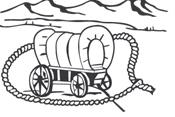






















Program costs have far exceeded initial estimate presented to voters
BY SARA WILSON NEWSLINE COLORADO
e head of Colorado Parks and Wildlife told lawmakers on Monday that it is the department’s “preference” to release more wolves into the state next year, despite calls to pause the reintroduction program.
“I don’t have the right answer to whether or not a pause is the right thing to do, or get the last 15 (wolves) out and move on to the management piece,” CPW Director Je Davis said. “Every time we release more animals, it’s more emotional and di cult for us to pull o that operation, and it’s also challenging for the (livestock) producers at the same time.”
Davis appeared in front of the Colorado Legislature’s Water Resources and Agriculture Review Committee to give an update on the state’s wolf reintroduction plan, which voters approved in 2020. Wildlife o cials have released 25 wolves in the state since December 2023 from Oregon and Canada.
e original goal was to release 10 to 15 per year for three to ve years, beginning in 2023, to get to a stable population of at least 50 wolves in the state.
Davis said the department’s preference is to sign a new agreement with British Columbia to relocate more wolves from Canada.
But the program is highly controversial, especially among rural Colorado farmers and ranchers who decry wolves killing their livestock. Between April 2024 and April 2025, wolves killed at least 25 cattle and sheep, according to the recently released annual report on the reintroduction e ort.
However, the plan does not mention existing co-stewardship arrangements at major national monuments in the West, such as Bears Ears in Utah and Chuckwalla and Sáttítla Highlands in California. It also does not address whether those monuments will retain their protections under the Antiquities Act.
e Copper Creek pack was responsible for many livestock deaths in Grand County in 2023, prompting to CPW to capture the six wolves last September and release them alongside the Canadian wolves earlier this year in a di erent part of the state. at decision, producers said Monday, led to an erosion of trust in CPW.
“A depredating pack was known to have depredated in Oregon before they put them in Middle Park. ey had a serious impact there. ey packaged them up, put them away for a while and then they put them back out right in my backyard,”
said Tom Harrington, a cattle producer in Roaring Fork Valley and previous president of the Colorado Cattlemen’s Association.
A September 2024 petition led by a coalition of livestock associations and other agricultural interest groups requested a pause in CPW’s planned reintroductions until the department could implement strategies to prevent depredations. CPW’s commissionrejected the petitionin January.
“I believe that we need no more new releases until plans are in place and the basics are working,” Harrington said Monday. “We need metrics to measure the success of what this program is. I believe we can — and here comes that word that I really don’t like — coexist with the wolves that choose to not prey on our livestock.”
CPW has worked through some of the seven points of the petition, including de ning “chronic depredation” as three or more depredations by the same wolf or wolves within 30 days. e division has also outlined a lethal removal approach that starts by killing one or two wolves, evaluating the pack’s behavior and its e ect on depredation, then considering additional lethal removals. CPW also started a range rider program to deploy riders in areas with high wolf conict to “proactively haze predators using non-lethal techniques,” according to the
e draft strategic plan’s utilitarian perspective may nevertheless have little impact on expected legal battles over the department’s e orts during the next few years to facilitate oil, gas, and coal production and mineral exploration, logging, and grazing.
“I’ve never seen the strategic plans relied on in a legal context,” Sassman said. “ ere are other kinds of legal actions they will have to take in order to e ectuate these goals.”
A rst e ort at a 2026-2030 plan, released in April, also declared that Interi-


annual report.
CPW killed a wolf for the rst time in May in Pitkin County.
“ e idea of a pause continues to make sense to me, if it creates more time for more robust implementation and completion of those seven items, and maybe now beyond those seven,” House Speaker Julie McCluskie, a Dillon Democrat, said. “But I think the entire reintroduction and restoration is at risk if we can’t get our legs underneath us and be in a position to do this the way we need to.”
Representatives from CPW also told lawmakers Monday that the cost of the reintroduction has reached about $3 million. In 2020, voters were given an estimate of about $800,000 for the program.
“I understand a lot of this money is go-
or’s rst priority will be to “restore American prosperity.” at version, unlike the one Interior released last month, also explicitly raised the prospect of public land sales. Winter said that the exclusion of that idea from the new rendering should not be taken as a signal that the administration has abandoned the proposition.
“I don’t think the administration is backing away from that idea,” he said. “ is issue is being taken up by Congress as part of the (budget) reconciliation process and this is really an issue that will be


ing to ranchers and producers to help to compensate them,” Sen. Dylan Roberts, a Frisco Democrat, said. “ at’s money hopefully being well spent, but that’s also money in the state of Colorado right now — in the budget situation we’re in — that is not going to xing potholes in roads. It’s not going to classrooms across the state. It’s not going to people who are losing their health care and many who are about to lose their health care. is seems out of control.”
Davis said there are a lot of factors that go into realizing the reintroduction plan that were not considered in the ballot cost estimate, such as the state’s decision to compensate for livestock weight loss and fewer pregnancies due to wolf presence and the high cost of beef.
determined by Congress and not by the department because that’s where the authority lies.” e public will have an opportunity to comment on the plan, once Interior nalizes a draft. e department has not yet posted it at regulations.gov, the federal government’s online portal for that purpose. is story is from Colorado Newsline. Used by permission. For more, and to support the news organization, visit coloradonewsline.com.




















